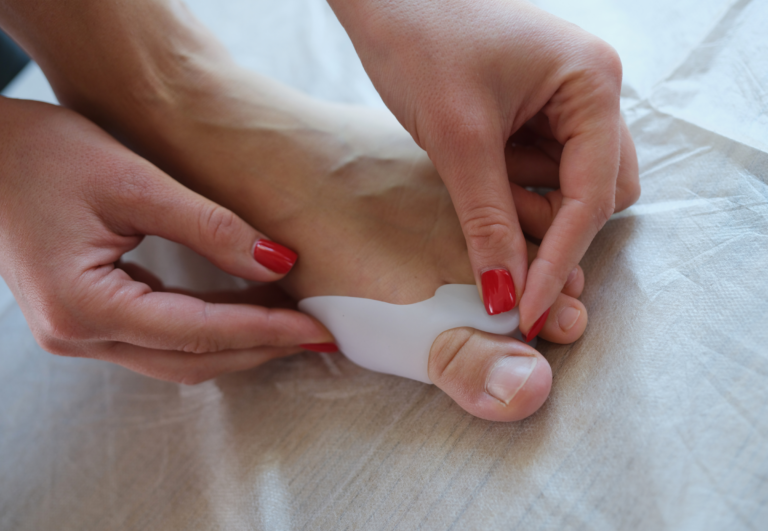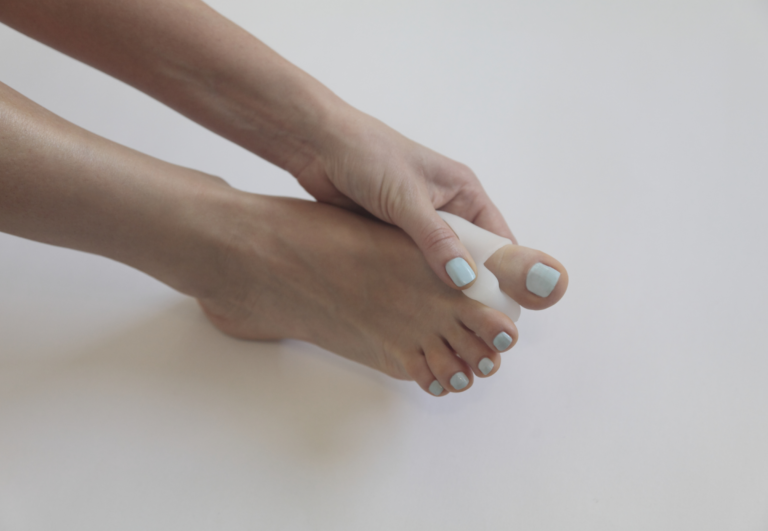Can Toe Spacers Alleviate Arthritis Symptoms in Feet: An In-Depth Look
As someone with extensive knowledge about toe spacers, I understand the discomfort and limitations that arthritis in the feet can cause. Toe spacers have been recognized as a simple, non-invasive tool that can potentially provide relief from the discomfort associated with foot arthritis. They are designed to realign the toes to their natural position, which may alleviate pressure and pain.
By creating space between the toes, these spacers can improve circulation and promote better alignment, which is crucial for foot health. This improved alignment may offer a reprieve from the constant stress on the joints that arthritis suffers often experience, leading to a reduction in overall foot pain. While toe spacers can be beneficial, they are one part of a broader management strategy that might include lifestyle changes, exercise, and other therapies recommended by healthcare professionals.
Can Toe Spacers Alleviate Arthritis Symptoms in Feet?
Toe spacers may help alleviate some symptoms of arthritis in the feet by promoting proper toe alignment and reducing pressure on the joints. Here’s how they can be beneficial:
- Joint Relief: By separating the toes, spacers can reduce the stress on the joints, which might alleviate pain and discomfort associated with arthritis.
- Improved Circulation: Proper toe alignment can enhance blood circulation, potentially reducing stiffness and promoting healing in arthritic feet.
- Enhanced Mobility: Toe spacers can increase the flexibility and mobility of the toes, which may be beneficial for arthritic feet that often suffer from reduced range of motion.
However, it’s important to note that while toe spacers can provide symptomatic relief, they are not a cure for arthritis. Individuals with arthritis should consult with a healthcare professional before using toe spacers to ensure they are appropriate for their specific condition and to receive guidance on proper use.
What Causes Arthritis in Feet?
Arthritis is a common condition affecting the joints in various parts of the body, including the toes and feet. It involves inflammation that can cause pain, stiffness, and swelling in the joints. There are different types of arthritis that can affect the feet:
- Osteoarthritis (OA), the wear-and-tear form of arthritis, can damage the cartilage and bones in the feet.
- Rheumatoid Arthritis (RA) is an autoimmune disorder causing inflammation in the lining of the joints.
In the feet, the impact of arthritis is quite significant due to the complex structure of the foot that comprises 28 bones and more than 30 joints. The discomfort can impair one’s ability to perform day-to-day activities. Here’s a brief overview:
| Type of Arthritis | Description |
|---|---|
| Osteoarthritis | Often affects the joint of the big toe and may lead to the formation of bunions. |
| Rheumatoid Arthritis | Can affect several foot joints simultaneously and might lead to foot deformities like hammertoes. |
Symptoms to look out for include:
- Tenderness or pain
- Stiffness in the joints
- Swelling
- Change in shape or appearance of the feet
I find that understanding these basics about arthritis in the feet is crucial for anyone looking to alleviate discomfort. While I can’t give medical advice, I believe being aware of the symptoms and the affected areas is the first step towards managing the condition effectively.
Benefits of Toe Spacers
Toe spacers are designed to address issues like bunions, hammertoes, corns, and calluses by improving toe alignment and reducing pressure. They can be a simple and non-invasive solution to enhance foot comfort and mobility.
Alignment and Pressure Relief
Toe separators can play an essential role in correcting the alignment of toes that may be affected by conditions such as bunions or hammertoes. By gently separating the toes, they distribute pressure more evenly across the foot, which can alleviate pain and discomfort from corns and calluses. The consistent use of toe spacers may help maintain proper toe positioning and reduce friction between toes.
- Bunions: Pressure distribution helps in minimizing the discomfort caused by bunions.
- Hammertoes: Supports realigning bent toes.
- Corns/Calluses: Reduces direct friction, aiding in the prevention and treatment.
Improved Mobility and Exercise Support
My experience with toe spacers has shown that they can enhance mobility and provide support during exercise. By creating space between the toes, movement becomes less restricted, which is particularly beneficial during activities such as yoga or certain types of weightlifting.
They encourage a more natural toe spread, which helps in gaining a better balance and stability. This can lead to a more comfortable and effective workout, especially for individuals with foot conditions that impact their ability to engage in physical activity.
- Movement: Facilitates a more natural toe splay which can improve balance and gait.
- Exercise Support: Offers added stability during physical activities, allowing for better performance and reduced risk of injury.
Selecting the Right Toe Spacers
When looking for toe spacers to help with arthritis symptoms in the feet, it’s important to consider both the material and fit, as these factors greatly affect their efficacy and comfort.
Materials and Types
I’ve found that toe spacers made from silicone or gel provide a good balance of comfort and support. Silicone toe spacers are durable and hold their shape well, while gel toe spacers tend to be softer and more flexible. Mind Bodhi toe separators are a popular choice for their soft yet resistant silicone material that comfortably fits between the toes.
- Silicone: Durable, maintains shape, less likely to cause irritation.
- Gel: Softer, highly flexible, can provide more cushioning.
Size and Fit Considerations
The correct size of toe spacers is crucial for them to be effective. They shouldn’t be too tight or too loose; a snug fit ensures they stay in place without causing additional discomfort. Some toe spacers are one-size-fits-all, but others come in various sizes.
- Snug Fit: Ensures toe spacers stay in place.
- Various Sizes: Check if the brand offers different sizes to match your feet.
Always remember, selecting the right toe spacers is a personal choice. What works best for someone else may not be the right option for you. It’s about finding a balance between relief and comfort tailored to your individual needs.
Incorporating Toe Spacers into Treatment Plans
I’ve found that toe spacers can be an effective addition to treatment plans for those experiencing arthritis-related symptoms in the feet. By gently separating the toes, spacers can reduce pain and swelling through improved alignment and distribution of pressure. Below, I’ll outline a straightforward way to integrate toe spacers into your routine.
Daily Stretches and Exercises:
- Start with gentle toe stretches to increase flexibility.
- Incorporate toe spacers during these stretches for added benefit.
- Use spacers while performing exercises designed to strengthen the toes and feet.
Consistent Physical Therapy:
- When attending physical therapy sessions, bring your toe spacers along.
- Therapists can show how to use spacers effectively during therapy exercises.
- Consistent use can aid in recovery by supporting correct toe alignment.
Managing Pain and Swelling:
- Wear toe spacers to reduce discomfort during everyday activities.
- For swelling, combine the use of spacers with elevation and ice as advised.
Note: While toe spacers can offer symptomatic relief, they are not a cure for arthritis and should be used as part of a broader treatment plan discussed with healthcare professionals.
Lifestyle and Additional Care Strategies
Foot Care: I recommend regular foot care practices to alleviate arthritis symptoms. This includes using toe spacers, which can help realign joints and reduce pain. Daily gentle foot exercises and stretches can enhance flexibility and strength.
Weight Loss: If you’re carrying extra weight, losing some can alleviate pressure on arthritic feet. Every pound of body weight lost translates to four pounds less stress on the feet during activities like walking.
Walking: Incremental walking is beneficial. Start with short distances and gradually increase as comfort allows. Supporting your feet with properly cushioned and fitted footwear is a big part of making walking a positive experience.
Proper Footwear: Wearing poorly fitting shoes can exacerbate foot discomfort. Invest in shoes that offer good support and a wide toe box to accommodate toe spacers without adding pressure.
| Lifestyle Change | Benefit |
|---|---|
| Foot Exercises | Increases flexibility and strength |
| Gradual Weight Loss | Decreases stress on arthritic feet |
| Proper Footwear with Toe Spacers | Improves alignment and reduces pain |
Anti-inflammatory Medications: Alongside these strategies, over-the-counter anti-inflammatory medications can help manage pain. Always consult with a healthcare professional before starting any new medication.
Lifestyle Changes: Simple changes such as a healthy diet, moderate exercise, and avoiding high-impact activities can make a notable difference. Tailoring your lifestyle to include arthritis-friendly activities can improve your quality of life.
When to Consult a Healthcare Professional
If you’re like me, using toe spacers to manage arthritis symptoms in your feet, knowing when to seek a professional’s opinion is crucial. Despite the non-invasive nature of toe spacers, there are specific instances where talking to a healthcare provider is recommended.
- Persistent Pain: If pain doesn’t improve or worsens after consistent use of toe spacers, schedule an appointment with a podiatrist.
- Medication Queries: Unsure about medication interactions? A healthcare professional can provide guidance.
- Cortisone Injections: If non-invasive methods fail, consult a podiatrist to discuss the possibility of cortisone injections for pain relief.
- It’s essential to discuss with a surgeon about your suitability for a procedure, especially if toe spacers and other non-surgical methods are insufficient.
In Case of Injury:
- If you suspect an injury or observe adverse reactions from using toe separators, professional advice is key.
Here’s a brief breakdown for easy reference:
| Situation | Action |
|---|---|
| Pain persists or worsens | Visit a podiatrist |
| Inquiries about medication | Consult a healthcare professional |
| Non-surgical methods failure | Discuss with a podiatrist |
| Considering surgery | Consult a surgeon |
| Suspected injury | Seek professional advice |
Remember, no guidance replaces a personalized consultation. When in doubt, a visit to the podiatrist is the best step toward proper foot care and pain management.





